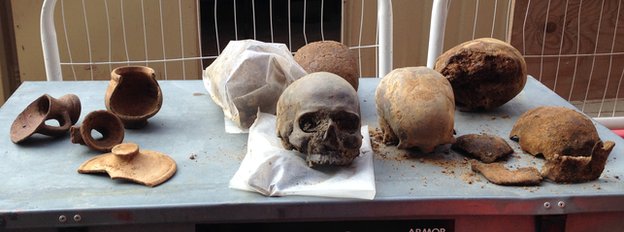Forensic Case Files: Roman Warriors in London
/
The London Cross Rail Project has previously brought historical remains to light, including the Black Death Plague victims we covered last spring. Recently, the oldest remains to date were unearthed nearly three metres below the surface—those of Roman warriors found in a drained riverbed under the Liverpool Street railway and underground station. The twenty skulls are believed to have been washed down the Walbrook River from a previously discovered Roman burial ground upstream.
The Walbrook—one of London’s 'lost rivers' that now runs completely underground— used to divide the city of London into the east and west sides, starting in the modern day district of Finsbury and running south before draining into the Thames River. A crucial water system during Roman Londinium times, the Walbrook was not only a transportation system; it also delivered fresh water to the city and carried away waste to the Thames. However, it was paved over in the fifteenth century to allow for better transportation through a growing metropolitan city with an ever increasing population.
Archeologists surmise that the Walbrook may have eroded the land around the old Roman cemetery under Eldon Street, washing the skulls downstream. The skulls were discovered at a bend in the old river, where they became lodged. Trapped in the soft mud of the riverbank, the skulls remained remarkably well-preserved. A number of Roman-era pottery shards in equally good condition were recovered with the skulls. The fact that only the skulls of the dead have been discovered could be due to several factors: Due to their shape, skulls tend to travel further in rivers as they can be rolled along by the downstream water flow. But these may have been decapitation victims, the act of severing the skulls from the body allowing for easier transportation to a new location.
Additional dating is yet to be completed, but archeologist estimate that the skulls are from the third and fourth century A.D. since this is when Roman burials were common, as opposed to cremation, which was the common practice before the second century A.D. Forensic anthropologists will study the remains to determine age and sex.
As the project continues, it is expected that additional Roman-era remains will be found, expanding on the current understanding of Roman life in early London.
I’m off to Boston on Thursday for research for several books and to attend the New England Crime Bake, so I’ll be back with a report on that conference next week.
Photo credit: BBC News



 87.5%
87.5%